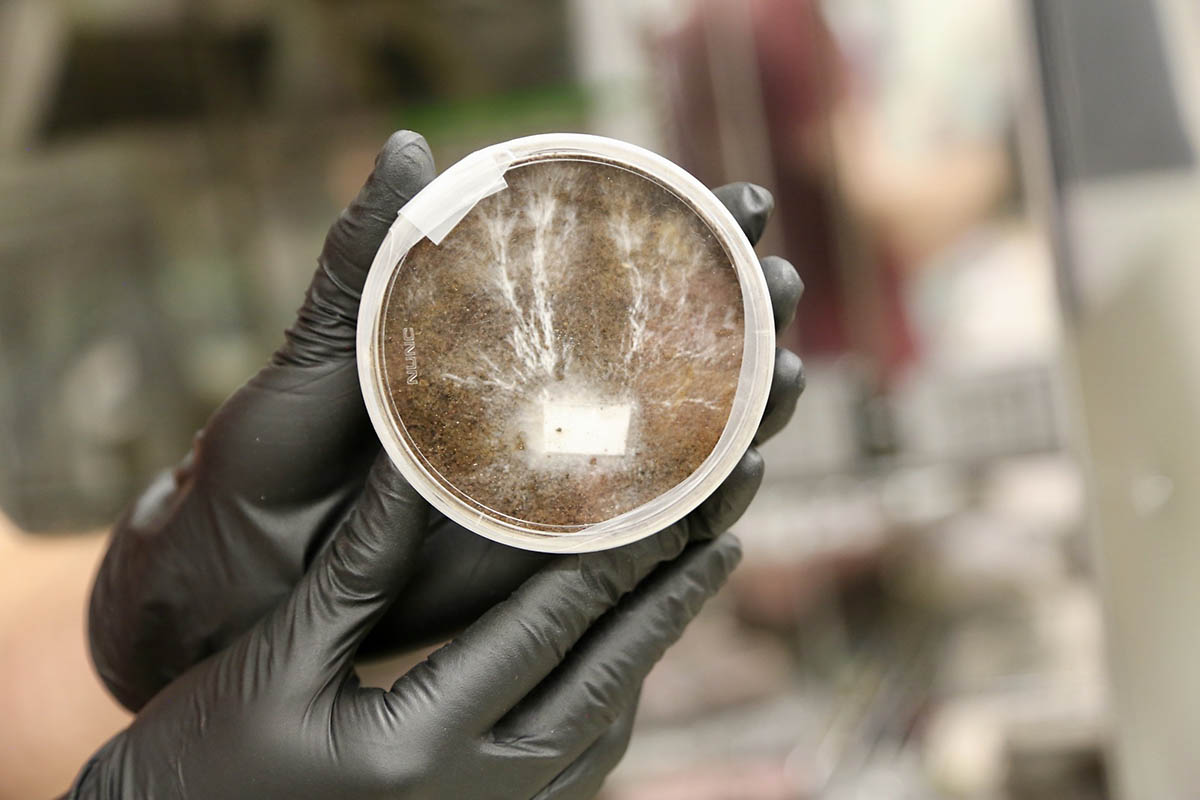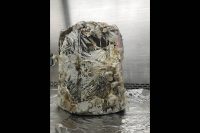A researcher holding a petri dish containing mycelia – the underground threads that make up the main part of a fungus – growing in simulated martian soil, also known as martian regolith. (NASA/Ames Research Center/Lynn Rothschild)
Home A researcher holding a petri dish containing mycelia – the underground threads that make up the main part of a fungus – growing in simulated martian soil, also known as martian regolith. (NASA/Ames Research Center/Lynn Rothschild) A researcher holding a petri dish containing mycelia – the underground threads that make up the main part of a fungus – growing in simulated martian soil, also known as martian regolith. (NASA/Ames Research Center/Lynn Rothschild)



